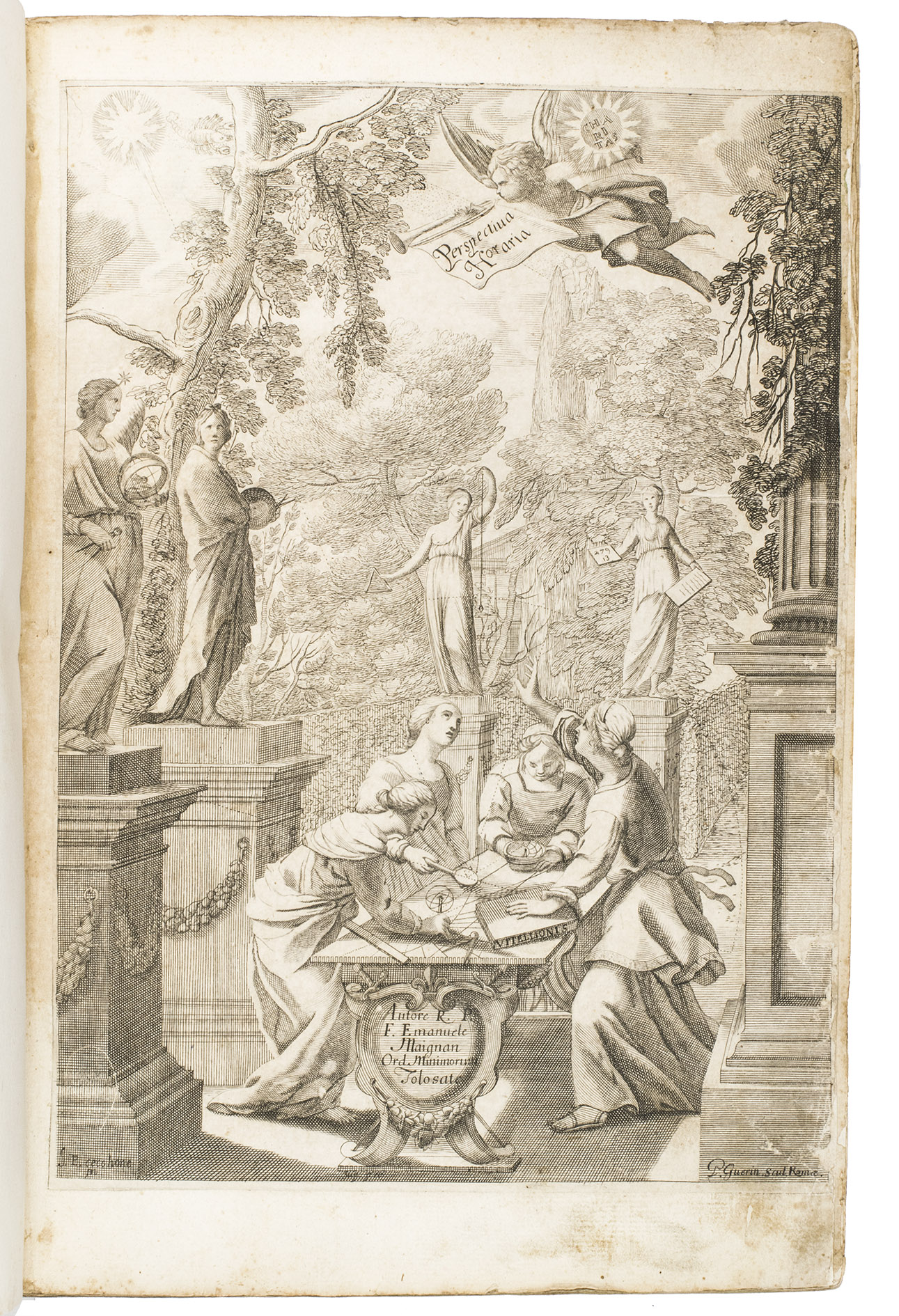MAIGNAN, Emmanuel.
Perspectiva horaria, sive de horographia gnomonica tum theoretica, tum practica libri quator ...
Rome, Philippus Rubeus, 1648. Folio. With an engraved allegorical frontispiece, 45 engraved plates (2 folding, 43 full page), a woodcut vignette on the title page, an engraved headpiece with portrait to the dedication, a folding table, and numerous woodcut figures and illustrations in the text. Contemporary Southern European limp vellum, with the manuscript title on the spine. [28], 705, [1] pp.
€ 9,500
First and only edition of an encyclopeadic work on perspective and horology. This richly illustrated work contains an extremely detailed discussion of sundials, from both a practical and theoretical point of view, explains the grinding and polishing of lenses, and contains a system of optics with an early theory of the refraction of light. It is also one of the most important works on anamorphosis, or intentionally distorted projections, from the 17th century, and explains how to make projections onto a wide variety of different surfaces, including walls, vaulted ceilings, and arcades. Despite its importance, the work is relatively rare on the market, as it has only been offered for sale three times in the past 20 years.
Emmanuel Maignan (1601-1676) was a mathematician who joined the Order of Minims when he was just 18. He resided at the Monastery Ss. Trinità dei Monte in Rome, where he met the mathematician and painter of anamorphic art Jean-François Niceron (1613-1646). Together they made an anamorphic fresco on the walls of the monastery in 1642. Niceron painted Saint John at Patmos with a landscape in the foreground on one wall, and Maignan painted a companion piece of Saint Franciscus of Paola on the other, which can still be seen today. Their paintings drew many visitors to the monastery. British author John Evelyn saw them in 1645, and Jean du Breuil described them in 1649 in his Cabinet des Anamorphoses coniques. Both Niceron and Maignan much contributed to the wider practising of illusionistic perspective and anamorphosis, which until then had been looked upon rather dubiously as something occult. Maignan's method for creating his painting, which included the use of a perspective machine, is described extensively in the present work.
The vellum is somewhat creased and stained, the head of the spine, the upper outer corner of the front board, and the upper edge of the back board have been restored. The end papers have recently been replaced, the work is somewhat browned and foxed throughout, with some leaves affected more than others. Otherwise in good condition. DSB 9, p. 25; Honeyman collection 2108; Houzeau-Lancaster 11466; Kemp, The science of art, p. 211; De Meyere-Wijma, Anamorfosen, pp. 67-69 (with reproduction of the anamorphoses); Poggendorff II, p. 15; USTC 4021199; Vagnetti EIIIb46; not in Fowler; Kat. Berlin.
Related Subjects:













